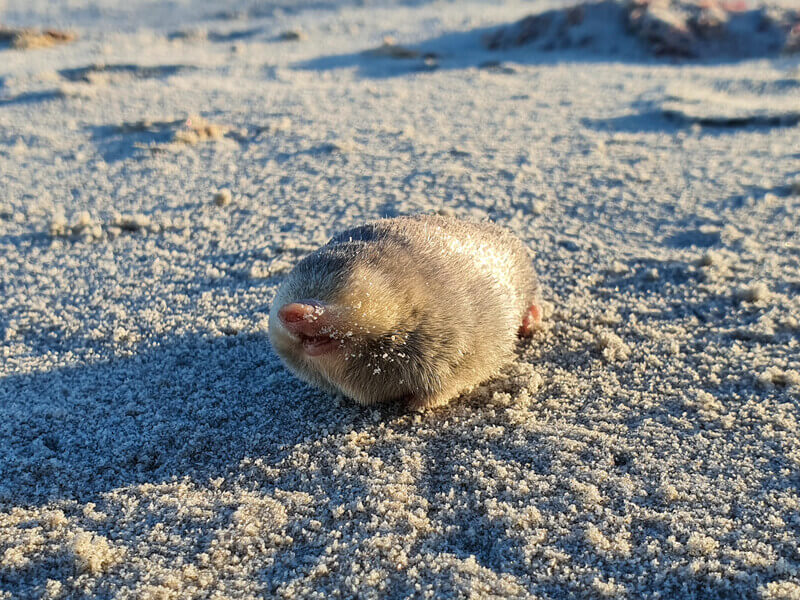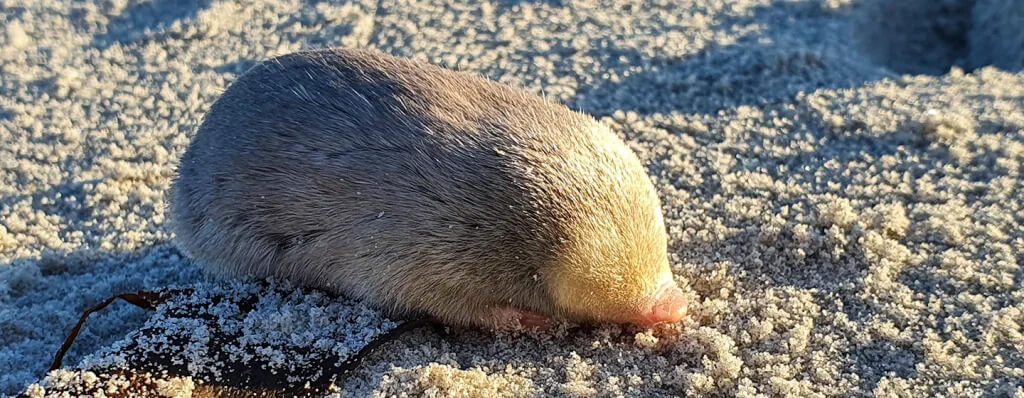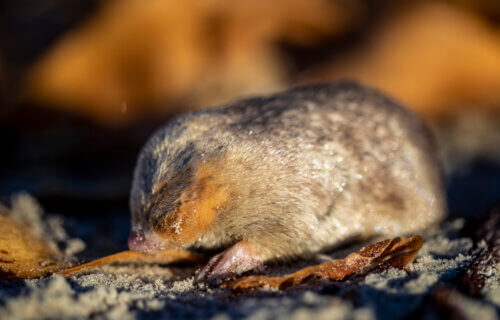PORT NOLLOTH, South Africa — A rare blind mole with super-hearing has been spotted in the wild after disappearing for nearly 90 years. The De Winton’s golden mole, a native of South Africa, has reappeared for the first time since 1936. It’s the eleventh lost species to be rediscovered since the launch of the Search for Lost Species in 2017.
The species was found thanks to a collaborative effort by conservationists and geneticists from the Endangered Wildlife Trust (EWT) and the University of Pretoria.
“It was a very exciting project with many challenges,” says Esther Matthew, senior field officer with Endangered Wildlife Trust, in a media release. “Luckily we had a fantastic team full of enthusiasm and innovative ideas. Which is exactly what you need when you have to survey up to 18 kilometers [11.2 miles] of dune habitat in a day.”
To trace the elusive golden mole, the EWT team employed an innovative technique: environmental DNA (eDNA). This method involves detecting the genetic material that animals leave behind as they move through their environment, often in the form of skin cells, hair, or bodily excretions. Golden moles, residing mainly in inaccessible burrows, possess sensitive hearing and rarely leave visible trails on the surface as they move through sand.

“Extracting DNA from soil is not without its challenges, but we have been honing our skills and refining our techniques — even before this project — and we were fairly confident that if De Winton’s golden mole was in the environment, we would be able to detect it by finding and sequencing its DNA,” explains Samantha Mynhardt, conservation geneticist with the Endangered Wildlife Trust and Stellenbosch University.
By collecting over 100 soil samples from South Africa’s northwest coast in 2021 and conducting meticulous genetic analyses, the team identified several golden mole species in the region.
While cape golden mole and Grant’s golden mole were among the commonly found species, the discovery of Van Zyl’s golden mole and, eventually, De Winton’s golden mole marked a significant breakthrough. However, distinguishing De Winton’s golden mole from Van Zyl’s was challenging due to their genetic similarity.
A critical breakthrough occurred when a second gene sequence of De Winton’s golden mole from a specimen at the Iziko South African Museum became available in early 2022. This more varied gene sequence enabled the team to conclusively confirm the presence of De Winton’s golden mole through a match with their eDNA sequences.

“Though many people doubted that De Winton’s golden mole was still out there, I had good faith that the species had not yet gone extinct,” notes Cobus Theron, senior conservation manager for EWT and a member of the search team. “I was convinced it would just take the right detection method, the proper timing, and a team passionate about finding it. Now not only have we solved the riddle, but we have tapped into this eDNA frontier where there is a huge amount of opportunity not only for moles, but for other lost or imperiled species.”
Researchers, working for over two years, used various tools and interviewed local communities in South Africa to locate potential habitats of the golden mole. They even had a scent-detection border collie to help identify trails left by the animals.
Since the 2021 expedition, EWT has identified four more populations of De Winton’s golden mole and is actively engaged in protecting these creatures with support from various organizations.
Apart from the golden mole, Re:wild, in collaboration with global partners, has confirmed the rediscovery of several other lost species across different parts of the world, underscoring the significance of conservation efforts in preserving biodiversity.
The study is published in the journal Biodiversity and Conservation.
You might also be interested in:
- Strange egg-laying mammal rediscovered after disappearing for 62 years
- ‘Captivating new species’: Electric blue tarantula discovered in Thailand
- Secret to life-long fertility for women may be hiding in naked mole-rats

